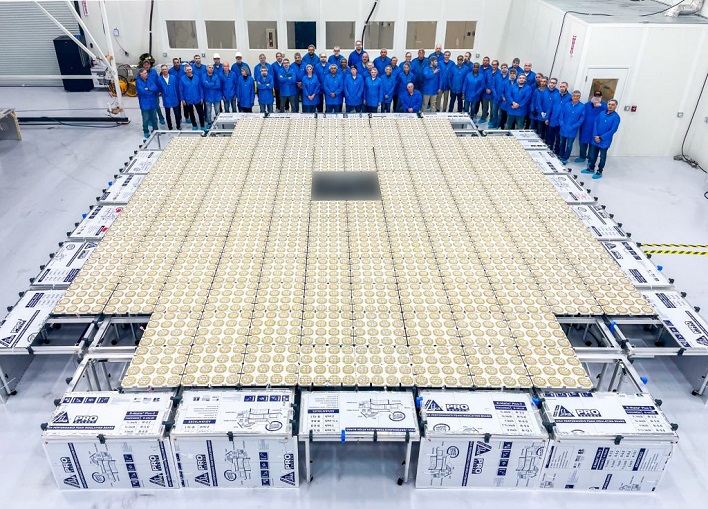Astronomers Slam Massive BlueWalker 3 Satellite For Being Obnoxiously Bright

"The night sky is a unique laboratory that allows scientists to conduct experiments that cannot be done in terrestrial laboratories," remarked Dr. Dave Clements from the Department of Physics at Imperial. "Astronomical observations have provided insights into fundamental physics and other research at the boundaries of our knowledge and changed humanity's view of our place in the cosmos. The pristine night sky is also an important part of humanity's shared cultural heritage and should be protected for society at large and for future generations."

The CPS initiated an international observing campaign of BlueWalker 3 satellites, contributed to by amateur observers worldwide. Data was collected over 130 days, and showed an abrupt increase coinciding with the complete unfolding of the antenna array of BlueWalker 3, the largest commercial antenna system ever deployed into low-Earth orbit at 693 square feet.
According to the findings, BlueWalker 3 could also interfere with radio astronomy. Dr. Mike Peel remarked, "BlueWalker 3 actively transmits at radio frequencies that are close to bands reserved for radio astronomy, and existing observatory protections from radio interference may not be sufficient. Further research is therefore required to develop strategies for protecting existing and upcoming telescopes from the numerous satellites planned for launch over the next decade."
As more companies look to get into the race for space-based communications like BlueWalker 3, the problem will seemingly only worsen if it is not nipped in the bud now. Hopefully, companies, along with the help of astronomers and scientists, can figure out a method that will not impede the progress of either moving forward.

